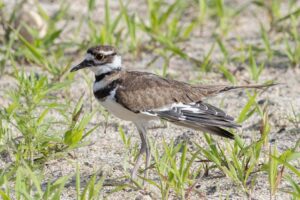The hydrosphere is an important part of geography and there are multiple concepts within it that constitute the water world. The ocean floor, as the name suggests, is the base or the floor of the ocean which is deep down the surface of water visible to us.
There are various classifications of the floor variations that come with their own features and functions. All IAS Exam aspirants must study the details discussed below as questions based on the same can be framed for the geography section of the paper.
Candidates are also advised to go through the IAS Geography Syllabus to review the different topics included in the section for the prelims and mains exam.
Ocean Floor [UPSC Notes]:-Download PDF Here
All About Oceanic land-forms

(Image Source: noaa.gov)
About 71% of Earth’s surface is covered with water. It is said to be the only planet in the solar system that has water on its surface and is known as the ‘water planet’.
At the first glimpse what we see is the abundant water present on the surface of the ocean, but deep down there is an underwater landscape.
While the ocean has an average depth of 2.3 miles, the shape and depth of the seafloor are complex. Discussed below are the four major divisions of the ocean floors and each of their features.
1. The Continental Shelf

(Image source: Wikipedia)
- The term “continental shelf” is used by geologists generally to mean that part of the continental margin which is between the shoreline and the shelf break
- A continental shelf is the edge of a continent that lies under the ocean
- It extends from the coastline of a continent to a drop-off point called the shelf break
- The definition of the continental shelf and the criteria by which a coastal State may establish the outer limits of its continental shelf are set out in article 76 of the United Nations Convention on the Law of the Sea
- The continental margin consists of the seabed and subsoil of the shelf, the slope and the rise
- Ocean currents and runoff from rivers bring nutrients to organisms that live on continental shelves
- Plants and algae make continental shelves rich feeding grounds for sea creatures
- The shallow water over the shelf enables sunlight to penetrate through the water to the bottom and encourages the growth of microscopic plants and animals called planktons, which are the food for fishes
- The waters along the continental shelf are usually productive, both from light and nutrients from upwelling
- Enormous sedimentary deposits received over a long time by the continental shelves, turn out to be the source of fossil fuels
2. The Continental Slope

(Image Source – Coastalwiki)
- It is the seaward border of the continental shelf
- About 8.5% of the ocean floor is covered by the continental slope-rise system
- This system is an expression of the edge of the continental crustal block. Beyond the shelf-slope break, the continental crust thins quickly, and the rise lies partly on the continental crust and partly on the oceanic crust of the deep sea
- They have very little deposits of sediments on them due to their steepness
- In comparison to the continental shelf, the sea life is also very less
- Canyons and trenches are seen in this region
- The belt at the base of the continental slope that comprises sedimentary deposits, is known as Continental Rise
3. Abyssal Plains

(Image source: Wikipedia)
- Continuing your journey across the ocean basin, you would descend the steep continental slope to the abyssal plain
- This covers about 70% of the ocean floor
- Abyssal plains are the largest habitat on earth
- These deep, dark ecosystems are less productive than those along the continental shelf. It is because the sunlight does not penetrate through it
- The name may suggest that is it plain, but actually, they are not uniformly flat
- They are interrupted underwater mountains that are also biodiversity hotspots
- They cover a major portion of the ocean floors between the depths of 3000m to 6000m
- ‘Oozes’, the sediments formed from the remains of living things, can be found on the floor of the abyssal plain
- The abyssal plains’ floor also comprises sediments of red clay which are of volcanic origin and are generally brought over by the wind
- Two types of relief features can be found on the abyssal plains. These include:
- Submarine Ridges – They are the ocean mountains that occur near the middle of the oceans. Another name for Submarine Ridges is mid-oceanic ridges. Volcanism and earthquakes are frequent. The Mid-Atlantic Ridge is the largest continuous submerged mountain ridge
- Seamounts and Guyots – These are submerged volcanoes with sharp tops. Seamounts with a flattened top are called as Guyots or Tablemounts
4. Ocean Trenches

(Image Source: Wikipedia)
- After scaling the mid-ocean ridge and traversing hundreds to thousands of miles of abyssal plains, comes the Ocean Trenches
- They are long, narrow depressions on the seafloor
- are found in every ocean basin on the planet, although the deepest ocean trenches ring the Pacific as part of the so-called “Ring of Fire” that also includes active volcanoes and earthquake zones
- They are also known as Submarine Trenches
- The Mariana Trench in the Pacific Ocean is the deepest known part of the world
- The Pacific Ocean has the largest number of ocean trenches in the world
To get the NCERT notes on the Division of Ocean Floors, aspirants can visit the linked article.
Also, refer to the links below:
Minor Relief of the Ocean floor
Ocean relief is largely due to tectonic, volcanic, erosional and depositional processes and their interactions. Given below are the major types of minor relief of the ocean floor:
- Trenches
- Canyons
- Ridges
- Hills
- Sleeps
- Fracture Zone
- Atolls
- Island Arcs
- Coral reefs
- Sea Scarps
- Submerged Volcanoes
To read in detail about each of these, candidates can visit the Minor Relief of the Ocean Floor page.



